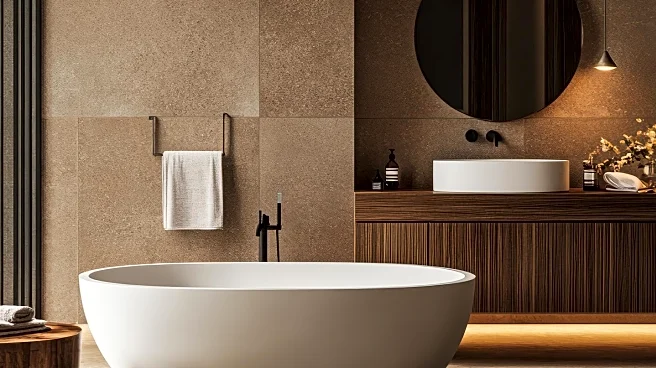What's Happening?
The Property Brothers, Drew and Jonathan Scott, have identified several common mistakes homeowners make when designing bathrooms. These errors often arise from a focus on aesthetics over practicality,
leading to spaces that may look appealing but lack functionality. Key issues include poor lighting, awkward layouts, slippery flooring, and insufficient storage. The brothers emphasize that while trends can be tempting, the primary goal should be creating a space that is both safe and comfortable for daily use. They advise that even small details, such as door placement and tile texture, can significantly impact the usability and resale value of a bathroom. Their insights are based on years of experience in home renovation, as seen on their popular HGTV shows.
Why It's Important?
The insights provided by the Property Brothers are crucial for homeowners looking to renovate or design bathrooms. Bathrooms are one of the most frequently renovated spaces in homes, and mistakes in their design can lead to costly corrections. By focusing on functionality and safety, homeowners can avoid common pitfalls that compromise comfort and usability. This approach not only enhances daily living but also increases the home's resale value. The emphasis on practical design over fleeting trends can lead to more sustainable and satisfying home environments, aligning with broader movements towards intentional and sustainable living.
What's Next?
Homeowners and renovators are likely to take these insights into account when planning future bathroom projects. The advice from the Property Brothers may influence design choices, encouraging a shift towards more practical and user-friendly spaces. As these ideas gain traction, there could be a broader industry trend towards prioritizing functionality in home design. This could also lead to increased demand for design professionals who understand the balance between aesthetics and practicality.
Beyond the Headlines
The focus on practical bathroom design reflects a larger trend in home renovation towards spaces that support sustainable and intentional living. This shift is part of a broader cultural movement that values experiences and functionality over excess and superficial trends. As homeowners become more aware of the long-term benefits of practical design, there may be a growing demand for products and services that support this approach. This could lead to innovations in home design that prioritize user experience and environmental sustainability.












